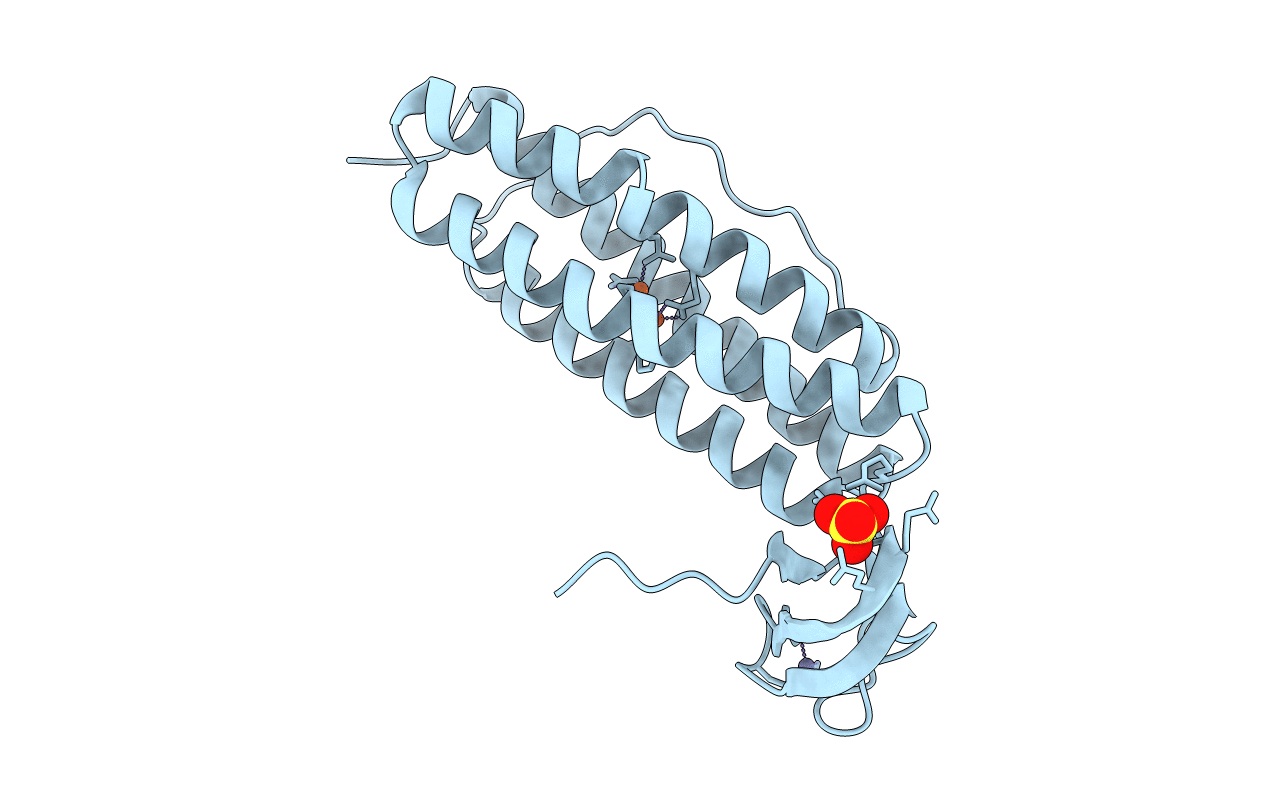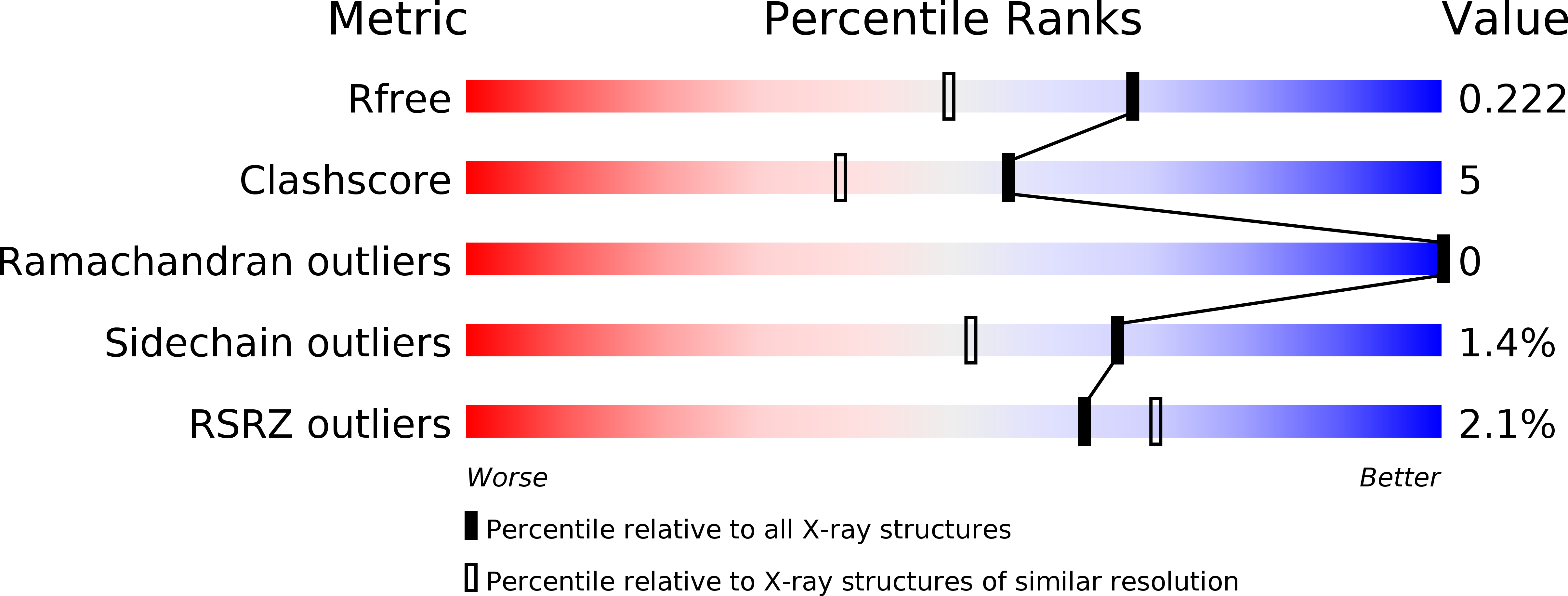
Deposition Date
2003-09-10
Release Date
2004-03-30
Last Version Date
2023-08-23
Entry Detail
PDB ID:
1QYB
Keywords:
Title:
X-ray crystal structure of Desulfovibrio vulgaris rubrerythrin with zinc substituted into the [Fe(SCys)4] site and alternative diiron site structures
Biological Source:
Source Organism:
Desulfovibrio vulgaris subsp. vulgaris (Taxon ID: 882)
Host Organism:
Method Details:
Experimental Method:
Resolution:
1.75 Å
R-Value Free:
0.21
R-Value Work:
0.18
R-Value Observed:
0.18
Space Group:
I 2 2 2


